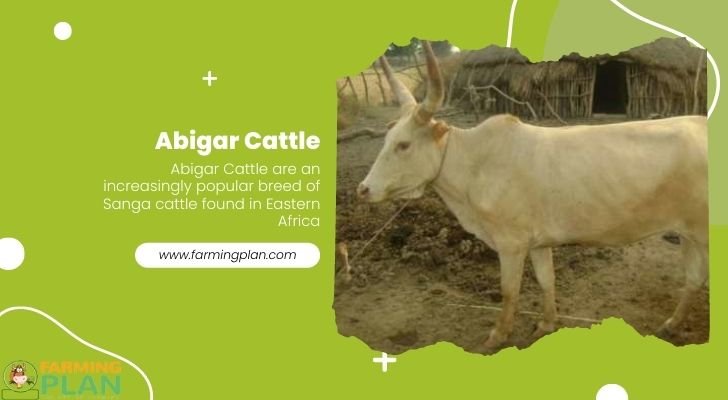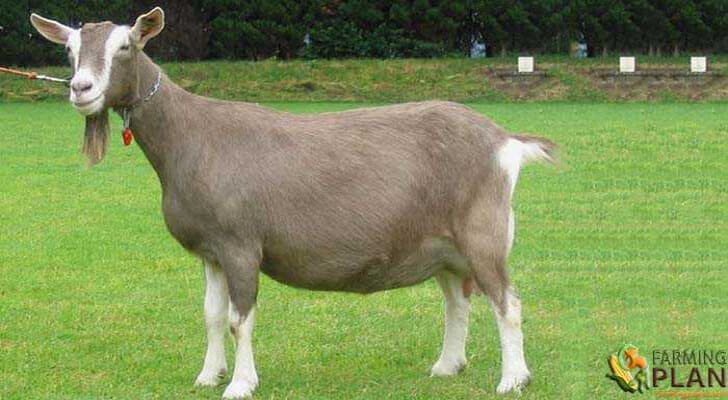Are you looking for an opportunity to start a business from scratch? Have you considered raising cattle? Abigar cattle are the perfect option for those looking to embark upon a beef-producing venture. Originating in Eastern Africa, the Sanga breed is known for its high-quality dairy and beef production capabilities. Beyond their immediate practical value, they also bring with them centuries of cultural tradition that add meaning and value to any herd. In this article, we’ll explore how one could get started on creating a sustainable beef cattle business using Abigar cattle as your starting point; everything from how to source them, the most important factors to consider when breeding, and general care advice along the way!

History & Origin
Abigar cattle originated in Eastern Africa and are a breed of Sanga cattle. Abigar have been kept domestically by African tribes for centuries, due to their high milk production. Abigar cows produce up to 750 kg of milk per lactation cycle, making them a valuable asset for African dairy farms. Abigar are also slaughtered for their beef, as it is less affected by disease than other breeds of cattle. Abigar has an enduring place in the history of African farming and provides a means of sustenance to millions!
Characteristics
Abigar Cattle are a breed of cattle found in Eastern Africa that are classified as Sanga. These animals are prized for their hardy and hearty characteristics; Abigar cows produce an abundance of milk, with an average yield of 750 kg per cow, while also providing a source of beef when slaughtered. Abigar Cattle have proven to be incredibly resilient, and able to thrive in a variety of climates and conditions, making them one of the most successful breeds known in Eastern Africa today.
Feed
Abigar cattle are native to Eastern Africa and belong to the Sanga cattle family. Abigars are one of the most popular breeds for dairy and also have soft, delicious beef. Abigars are raised primarily on a diet of natural grasses and hay, although supplements are occasionally given during times of drought or illness. Abigars take great pleasure in grazing their food, whether it’s the natural grasses they love or the occasional supplement that is provided by farmers who care for them. Feeding Abigars can be rewarding as they blossom with strong health due to their balanced diets.
Usage
Abigar Cattle are an increasingly popular breed of Sanga cattle found in Eastern Africa. They have become highly sought after due to their dual purposes, both as dairy cattle and beef cattle. Abigar cows produce a high-quality milking yield, an average of 750 kg per lactation period. In addition to this, Abigar beef is considered to be of excellent quality and flavor, making it a go-to choice for many local butchers. Abigar Cattle are efficient, rugged, and easy to care for too – all factors that contribute to the breed’s ongoing popularity in the region.
Special Feature
Abigar cattle are a special breed of Sanga cattle found in Eastern Africa. Not only are they prized for their milk production, but Abigar beef is also sought after and savored by connoisseurs all over the world. Abigar cows produce an impressive average of 750 kg of milk annually, making them an ideal choice for dairy producers looking to raise their yields. Abigar cattle are truly a remarkable breed, with excellent qualities both on the table and off.
Identify
Abigar cattle are ideal for beef production thanks to their singular qualities. Abigar cattle are a special breed of Sanga cattle found in Eastern Africa that have been known to be great producers of both dairy and other products for centuries. Thanks to these unique advantages, Abigar cows are an excellent option for anyone looking to raise their cattle for beef production. Abigar are hardy, healthy animals with great conformation and fertility rates, allowing them to produce exceptionally high-quality beef. Furthermore, each cow can produce approximately 750 kg of beef per year. Consequently, Abigar makes the perfect choice for those who want to produce excellent quality beef sustainably and efficiently on their farms.
Find an area where you can set up your business
Abigar cattle may not be familiar to most, but these Sanga breeds of cattle are found in Eastern Africa and are capable of providing both dairy and beef products. If you have an overall plan to start up an Abigar cattle business, what better place than Eastern Africa for fertile soils and plenty of grassy open fields? Abundant sunshine will further contribute to healthy Abigar growth, potentially yielding 750 kg produced from each cow! With open spaces plentiful in Eastern Africa and ample sunshine to support Abigar’s productivity, it may prove wise to pursue your dreams in such a landscaped setting.
Research the market to determine the best price points
Abigar Cattle are a popular breed in Eastern Africa not only for their dairy production but also for their beef yield. When making decisions about the Abigar market, producers must conduct thorough research to determine the best price points for purchasing, selling, and raising Abigar. Understanding these critical factors can help Abigar farmers maximize profitability while maintaining quality standards. To do this effectively, Abigar farmers need to be aware of local and national market trends, prices of livestock feed and materials, cattle health costs, and more. With diligent research and data collection, Abigar farmers can ensure that they remain ahead in an evolving industry.
Consider the logistics of shipping and transporting your cattle
Abigar Cattle are a breed that can be found in Eastern Africa and is classified as Sanga cattle. This breed is typically used for its dairy production, but Abigar cattle can also produce quality beef if its owners decide to slaughter it. Thus, when considering the logistics of shipping and transporting Abigar Cattle, one has to think about whether you would require something like a truck or trailer. An Abigar cow can produce up to 750 kg of weight, depending on the animal, so selecting the proper vehicle for transporting them is imperative to keep them safe during their travels. In the end, it’s essential to ensure that Abiggar Cattle have all of their needs taken care of so they can provide maximum yield for the owner in terms of dairy or beef production.
Investigate regulations in your area about raising livestock
Abigar cattle are a special breed of Sanga cattle found in Eastern Africa. Abigar Cattle are cherished for both their dairy production capabilities and their beef, but raising Abigar requires adherence to specific regulations. It’s important to investigate the regulations in your area about livestock and ensure that Abigar-raising business abides by all rules and regulations set forth. Failure to do so not only negatively impacts your business operations, but also has potential implications that extend beyond the Abigar themselves. Investing the time to research these guidelines will both protect you from violating laws as well as enhance Abigar’s future within your region.
FAQ
What are the three types of cattle?
Cattle are a species of bovine animal, typically found grazing in pastures or on farms. They are domesticated for their meat, milk, and hide (leather) uses. Generally speaking, there are three distinct types of cattle, Dairy Cattle – Dairy cows have been selectively bred to produce high-quality milk that can be used to make butter, cheese, and other dairy products. Their bodies produce more milk than beef cattle and they have an udder structure that is well suited for milking. Because dairy cows require daily milking they need close contact with humans which makes them very trainable animals and creates strong bonds with their handlers over time. Holstein Friesians are the most common type of dairy cow found around the world today; other breeds include Ayrshire, Brown Swiss, Guernsey, and Jersey cows among others.
What are known cattle breeds in Ethiopia?
Ethiopia is home to a wide variety of indigenous cattle breeds, many of which are well adapted to the harsh environment and climate characteristic of the region. The most common breed in Ethiopia is the Horro, which is also known as Galla, Boran or Oromo. This breed originated from northern parts of Ethiopia and is well suited for hot climates as it has short hair and thick skin. Other major indigenous Ethiopian cattle breeds include Siltie (or Sidama), Menz (or Gomma) , Fogera, Kombolcha-Jarso (or Hararghe), Mursi, Awassi, Haro Bakool, Somali Shancab, and Welamo.
What are the characteristics of agar cattle?
Abigar cattle are a zebu-type breed of cattle originating in East Africa. In their native range, they can be found in eastern Sudan, Ethiopia, and Somalia. They are hardy animals adapted to survive in harsh conditions, with long legs and wide hooves suited for traversing steep terrain. They have large heads with prominent foreheads and small ears that taper off into sharp points. Their coats consist of short hair that may range from grey to a red-brown color which never fades or thins out either seasonally or through age change. Abigars are typically hornless but some individuals may develop horns at maturity; both sexes usually possess dewlaps which hang down from the lower jawline near the throat.
Conclusion
Overall, Abigar cattle are an excellent choice for beef production. Although they require a unique set of resources, these amazing creatures can easily be integrated into any effort to begin producing beef. If you’re looking to make an investment in beef production and consider cattle such as Abigar cows, there are a few important pieces of information to keep in mind. First, identify the breed you would like to raise; then find an area with plenty of resources or seek help from local experts if needed. Additionally, it’s important to research the market and pricing options, consider logistics for shipping and transporting your livestock, invest in supplies, and follow all applicable regulations. Investing time upfront with proper planning can increase the chance of starting off on the right foot with Abigar cattle for beef production!


